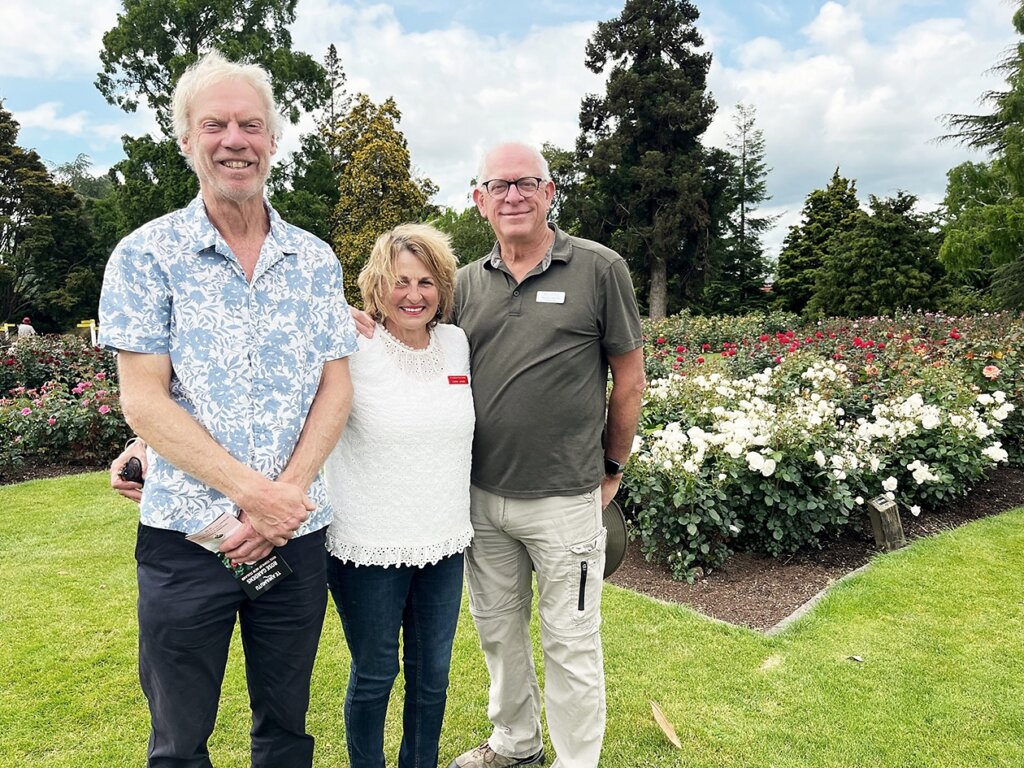
A smiling Te Awamutu Rose Society’s Linnie Jones flanked by international rose experts Michael Marriott, left, and Paul Zimmerman at the town’s central rose gardens
International rosarians Michael Marriott and Paul Zimmerman were quite taken by Te Awamutu when they dropped in with 20 international rose fans last week.
Both offered fulsome praise for the town’s rose beds at the central gardens and at the nearby War Memorial Park, and said they delighted in coming across rose breeds they would never have an opportunity to see in their home countries.
British-based Michael played an integral part in David Austen Roses for 35 years and has worked alongside the man famed for his ‘rose nose’, Robert Calkin. He has designed many of the world’s top rose gardens and borders, including the Royal Botanic Gardens at Kew, Hampton Court Palace, and Queen Mary’s Rose Gardens in Regent’s Park.
Fellow rosarian Paul Zimmerman hails from the United States and is one of the original founders of the Tinseltown Rose Society. He is an internationally respected rose horticulturist, writing extensively on the topic, holding workshops, lecturing and judging international rose shows.
Both are in New Zealand as co-leaders of a nine-day Botanica World Discoveries Tour to the country. It’s their first time leading a tour together.
Explaining their unfamiliarity with Kiwi roses, Paul said people in the US were not permitted to bring in New Zealand-bred roses, which means they are largely unfamiliar with the range that comes out of this country.
“However, we do know your Sam McGredy roses,” he said. “They were imported into the US in the days before those strict importation rules were applied, and are known to us.”
Sam McGredy was a renown Irish-born international rose breeder who moved to New Zealand in 1972. He died in Auckland in 2019.
Michael was charmed by the ‘feel’ of War Memorial Park and said they had both been thrilled to see a very rare rose, ‘Souvenir De Leonie Viennot’, climbing over a fence neighbouring the park.
“It was also lovely to see a perfect bloom of ‘Peace’ on the path up to the memorial itself,” Michael said.
They said the concept of local council-supported rose gardens such as those in Te Awamutu was a rarity in both their homelands, and said they were very impressed by what they had seen.









